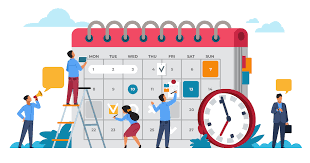Chrome extensions increase efficiency, speed, and overall user experience. For a better experience, it blocks certain types of ads. You can choose from many Chrome extension types for digital marketing.
Chrome Extensions for Digital Marketing: Benefits
Below are some of Chrome extensions’ many benefits to digital marketing.
- Increases Productivity
Chrome extensions are great for increasing productivity. It allows you to keep track of your tasks and removes background distractions. It also includes a time tracker, which helps you set clear goals for improving your work performance.
- Support Multi-device
Chrome extensions allow you to sync all of your devices. Even while on vacation, you can still access your desktop. This is a big advantage because you can access your work from anywhere in the world.
- Organization
Chrome extensions provide file organization in addition to to-do lists. You won’t need to search for files from two years ago if you need to access them. Chrome extensions will help you organize your files efficiently and effectively, saving you a lot of time.
- Marketing
To collect the contact information of potential leads, you can use a Chrome extension. You can then access that information later. Chrome extensions can be used to check spelling and grammar for content writing and marketing.
- Excellent project management
Chrome extensions make collaboration much easier. All the tasks assigned to your team can be viewed in real time. You can view the status of each task, as well as the progress. You can assign tasks and set deadlines.
It can be viewed in a calendar format and you can receive reminders. You can also add comments to each task. Chrome extensions are great for project management.
Best Chrome Extensions For Digital Marketing
It is possible to create a better Chrome extension than the current one. Here are some of the best Chrome extensions for digital marketing.
Bit.ly
Bitly is an extension that you can use to shorten links, share them, and track analytics through Bit.ly. This extension is essential to monitor all of your links.
ColorZilla
Colorzilla is an extension for graphic designers. You can choose a color directly from a page. You should use the same brand colors in your design creations. The extension also stores the hex code for you. This extension allows you to view the color code from any browser part.
Buffer
Buffer is a popular Chrome extension that allows you to share your content. You can easily schedule and manage posts. You can also track your performance with analytics and reports.
Ghostery
Ghostery is an extension which protects your privacy online. Ghostery allows you to block ads and clean up clutter while browsing. It also speeds up your browsing experience. It offers privacy protection and ad-blocking capabilities.
Grammarly
Grammarly is a popular Chrome extension. It’s a great extension for email marketing and a great tool to help bloggers correct spelling mistakes.
Grammarly can help you communicate what you need, whether it’s emails, blogs, landing pages, or post descriptors.









